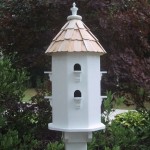Essential Aspects of Housekeeping Plants
Housekeeping plants, often called indoor plants, are an excellent way to bring nature into your home, improve air quality, and create a sense of well-being. Here are some essential aspects to consider when choosing and caring for housekeeping plants:
Choosing the Right Plants
When selecting housekeeping plants, consider the light conditions, temperature, and humidity of your home. Some plants, such as succulents and cacti, thrive in bright, dry conditions, while others, such as ferns and orchids, prefer shaded, humid environments. Research different plants to find ones that suit your living space.
Light Requirements
Light is crucial for housekeeping plants. Determine the amount of natural light your home receives and choose plants accordingly. Plants that require high light should be placed near windows, while low-light plants can tolerate indirect or artificial light.
Temperature and Humidity
Most housekeeping plants prefer temperatures between 65-75°F (18-24°C). Avoid placing plants near heat sources or drafts. Some plants, such as tropical ferns, prefer higher humidity, which can be achieved by using a humidifier or placing the plant on a tray filled with pebbles and water.
Watering Habits
Watering needs vary depending on the plant species, size, and environmental conditions. Avoid overwatering, as it can lead to root rot. Allow the top inch of soil to dry out before watering again. Use lukewarm water and drain any excess from the pot.
Fertilizing
Fertilize your housekeeping plants regularly during the growing season (spring and summer). Use a balanced liquid fertilizer diluted to half strength. Avoid over-fertilizing, as it can harm the plant.
Repotting
As plants grow, they will eventually need to be repotted. Choose a pot that is slightly larger than the current one and provides good drainage. Use a well-draining potting mix specifically designed for housekeeping plants.
Troubleshooting Problems
If your housekeeping plants are not thriving, observe them for signs of stress. Yellowing leaves may indicate overwatering or underwatering, while brown tips on the leaves may suggest low humidity or excessive sunlight. Adjust your care routine accordingly.
Conclusion
Housekeeping plants are a wonderful addition to any home. By understanding the essential aspects of their care, you can create a thriving indoor oasis that brings joy and well-being for years to come.

Diy Miniature Monstera Plant And Basket Planter

How To Make Your Home Beautiful And Comfortable It S Better Have Some Potted Plants Lily Fashion Style House Indoor Room With

How To Create A Plant Loving Home Rollingnature

Plant Trellis For Pots Diy With Natural Materials Greenhouse Studio

T M S Choice House Plant Mix Thompson Morgan

Plant Stylist Hilton Carter Creates Homes That Will Make You Green With Envy Essence House Plants Indoor Room Decor

Evergreen Indoor House Plant Collection 4 In 12cm Pots Plants Pack Of Diy At B Q

The Plant Work Owners On Making A Difference With House Plants Living North
Indoor Plant Mix 3 Plants House Office Live Potted Pot Tree A Very Co

12 Diy Indoor Plant Pot Ideas Your House Plants Will Love The Budget Decorator








